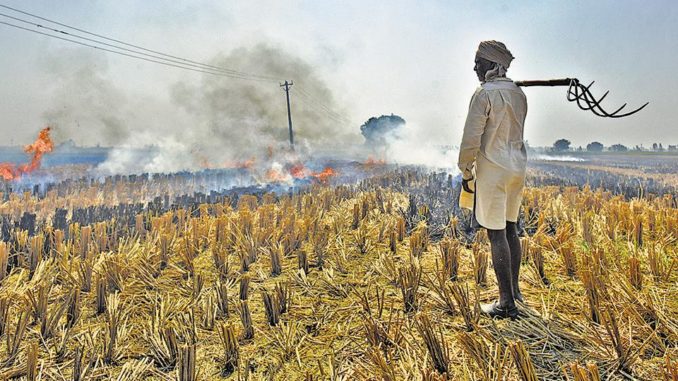
The recent spike in air pollution levels across northern India has raised concerns about the health of hundreds of million people living there. A significant proportion of air pollutants arises from burning of crop residue across the agricultural heartland. At its center is a lack of clarity among farmers about the likely cost versus potential benefits of alternative approaches, as we saw in the pilot project that was undertook last year in 19 villages over 16 thousand acres of farmland in Punjab, working with over 3000 farmers.
This project helped in making 75% of the land stubble burning free- compared to just 3.5% in 2017- with four of five farmers taking up alternative practices. About 25 thousand tonnes of rice straw were recycled back into the soil, saving fine particulate matter being released into the air and adding nutrients to the soil. Immediate tangible benefits realised by the farmers included time saved in field preparation and sowing operations by 7 to 10 days, reduction in weedicide application by 50-70% and lower irrigation requirement by 40%. Yield levels in wheat remained comparable with traditional fields and overall production costs decreased in general.
CII’s experience in the field throws up insights in various policy areas that need to be addressed. A lack of knowledge among farmers is a key deterrent. Farmers require real-time support and hand-holding for taking actions specific to their terrain, sil conditions, rainfall patterns, crop variety, etc. and it is critical to strengthen farmer advisory services to provide the right knowledge inputs at the right time. Further, effective communication and outreach to farmers is essential. Farmer cooperatives, farmer-producer organizations, and community platforms such as panchayats can be harnessed for this. Mass awareness drives in focus districts can be carried out by trained government officials and volunteers. Farmers would also benefit greatly from technical training. Lack of access to farm equipment for in-situ straw management has been a major hindrance. The government launched a scheme for agriculture mechanization in 2018, providing a subsidy for purchase of required machinery such as Happy Seeders, Zero Till, Mulcher etc. The subsidy scheme should be extended beyond March 2020 to give it time to build mass use of mechanization, which will favourably impact agricultural productivity.
Also, this scheme requires to be tweaked in several ways for optimal benefits. To reduce the burden of upfront payment by farmers of machines with subsidy being reimbursed later, the scheme could be integrated with the bank and NABARD schemes to facilitate credit linkages. The subsidy scheme must also include all recommended machines, giving farmers various options depending on the practice they prefer to adopt. To avoid partial burning of straw, the scheme can popularise the Super Straw Management System through a strict quality control system. Combine harvester machines when not mounted with Super SMS tend to create large heaps of straw in the field that are ususally burnt by farmers in a controlled manner. Government muct also encourage machines for ex-situ use of straw.
Ex-situ straw management includes small scale options as well as large scale industrial use of the residue- which could include ses such as composting, biogas, fodder, fertilisers, fuel fibre boards. R and D for the entire straw value chain is required and could develop business models for rural entrepreneurs. Actively support by corporates, government departments, state universities, farmer communities and volunteers, is necessary. The air we breathe is for all and all of us must work collaboratively to ensure that it remains clean and healthy.
Matter referenced:
Chandrajeet Banarjee, Times of India, Ahmedabad, Thursday, 7th November, 2019.
By: Dr. Bhawana Asnani.
Happy to see Reviews, Additions, Suggestions and Comments, further.

Leave a Reply
You must be logged in to post a comment.